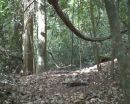'Dressing' in superconductors
A new piece in the high-temperature superconductivity puzzle
2014-10-15
(Press-News.org) "Imagine a heavy ball rolling on an elastic net: what happens?" asks Daniele Fausti, researcher at Elettra Sincrotrone of Trieste and the University of Trieste. That's how Fausti explains the concept of "dressing" in physics: "the ball's movement is slowed down because each movement is accompanied by a deformation of the net: the sphere no longer behaves like a free sphere (i.e., that rolls on a rigid plane), but like a sphere that is 'dressed' by the net's deformation". Why is this "dressing" concept so important? "Because it's what physicists believe explains superconductivity in conventional superconductors, that is, those that work at very low temperatures".
"To continue with the metaphor, in these materials we have a situation in which there are two heavy spheres: by adjusting adequately the speed of movement, we can, for example, get another ball to move in the "wake" of the first one. The two spheres become 'coupled', travelling together and behaving as a single object". This gives an idea of what happens to electrons in the crystal grid of the superconducting material. "Two electrons would normally repel each other owing to their having the same charge, but in these conditions they are able to travel together, hence the superconductivity".
Superconductivity is a property of materials that can be exploited in many ways, for example in the medical field or even in transport. However, the difficulty handling these materials that superconduct at very low temperatures, close to absolute zero (-273°C) and therefore hard to attain, makes them quite unsuited to technological applications. More recently, scientists have identified other superconductor families (based on copper oxides, cuprates, for example) that exhibit their properties at substantially higher temperatures (-196° C) and therefore promise a greater ease of use. The mechanism at play in these new materials remains, however, a mystery. "There's no experimental evidence that dressing plays a part in this case", explains Fausti.
"But are we really sure?" the scientist asked himself. Together with Fabio Novelli, from Elettra and the University of Trieste first author of the study, and an international group of researchers, Fausti developed a new technique to "look directly at the dressing of excitations in complex systems". By using ultrashort light pulses at different frequencies, it is possible to study the reaction of the so-called "boson field" with which the electrons are coupled in a crystal of La2CuO4, progenitor of the cuprate family. If the electrons are the heavy spheres and the superconductor's crystal grid is the elastic net, the light pulses may be considered an oscillating force that pushes the electrons on the net. By changing the frequency of the light pulse the researchers directly observed the elastic net reaction, and at certain frequencies its reaction proved to be fast enough to "dress" the sphere.
"This observation can now drive research into the theory of high-temperature superconductors", comments Massimo Capone, a SISSA researcher who took part in the theoretical part of the study. "According to this result, the electrons definitely undergo a coupling process mediated by a net that holds them together despite the strong Coulomb repulsion". In addition to its experimental results, the study also introduced a new, promising method for the study of materials of the future.
INFORMATION:
The study, part of the GO FAST project funded by the European Union, was also carried out the University of Naples, The Milan Polytechnic, the Riken Institute in Tokyo, the Catholic University of Brescia, the IFO of Barcelona, the University of Oxford and the University of Cologne.
[Attachments] See images for this press release:

ELSE PRESS RELEASES FROM THIS DATE:
2014-10-15
A UNIVERSITY of Huddersfield researcher has shown that tiny tweaks to the soundtrack can make TV adverts much more memorable, increasing their commercial impact.
The necessary adjustments are imperceptible to the ear and eye. But Andy Rogers – in the last stages of his PhD project at the University – has proved that there are considerable perceptual improvements if the synchronisation between the music and the visual content of the commercial is altered by just tenths of a second.
Joined by his PhD supervisor, Dr Ian Gibson, Andy has just presented his ...
2014-10-15
VIDEO:
This video shows a chimpanzee who has constructed a tool with which to investigate a camera (Nimba mountains, Guinea).
Click here for more information.
West African chimpanzees will search far and wide to find Alchornea hirtella, a spindly shrub whose straight shoots provide the ideal tools to hunt aggressive army ants in an ingenious fashion, new research shows.
The plant provides the animals with two different types of tool, a thicker shoot for 'digging' and a more ...
2014-10-15
COLUMBUS, Ohio—Our view of other solar systems just got a little more familiar, with the discovery of a planet 25,000 light-years away that resembles our own Uranus.
Astronomers have discovered hundreds of planets around the Milky Way, including rocky planets similar to Earth and gas planets similar to Jupiter. But there is a third type of planet in our solar system—part gas, part ice—and this is the first time anyone has spotted a twin for our so-called "ice giant" planets, Uranus and Neptune.
An international research team led by Radek Poleski, postdoctoral ...
2014-10-15
This news release is available in German. Public spending appears to have contributed substantially to the fact that life expectancy in eastern Germany has not only increased, but is now almost equivalent to life expectancy in the west. While the possible connection of public spending and life expectancy has been a matter of debate, scientists at the Max Planck Institute for Demographic Research (MPIDR) have now for the first time quantified the effect. They found that for each additional euro the eastern Germans received in benefits from pensions and public health ...
2014-10-15
VIDEO:
Fruit fly border cells form clusters of six to eight cells, which display directional migration during oogenesis. Migration of border cells in egg chambers can be examined in detail by...
Click here for more information.
Cell migration is important for development and physiology of multicellular organisms. During embryonic development individual cells and cell clusters can move over relatively long distances, and cell migration is also essential for wound healing and many ...
2014-10-15
Researchers from the University of Sheffield have found vital new evidence on how to target and reverse the effects caused by one of the most common genetic causes of Parkinson's.
Mutations in a gene called LRRK2 carry a well-established risk for Parkinson's disease, however the basis for this link is unclear.
The team, led by Parkinson's UK funded researchers Dr Kurt De Vos from the Department of Neuroscience and Dr Alex Whitworth from the Department of Biomedical Sciences, found that certain drugs could fully restore movement problems observed in fruit flies carrying ...
2014-10-15
CORVALLIS, Ore. – Since the first undersea methane seep was discovered 30 years ago, scientists have meticulously analyzed and measured how microbes in the seafloor sediments consume the greenhouse gas methane as part of understanding how the Earth works.
The sediment-based microbes form an important methane "sink," preventing much of the chemical from reaching the atmosphere and contributing to greenhouse gas accumulation. As a byproduct of this process, the microbes create a type of rock known as authigenic carbonate, which while interesting to scientists was ...
2014-10-15
Just 14 per cent of the population has an Advance Directive, or "living will", detailing their end of life treatment and care preferences, according to an article led by QUT Australian Centre for Health Law Research director Professor Ben White.
This research is from a joint University of Queensland, QUT and Victoria University study, supported by the Australian Research Council in partnership with seven public trustee organisations across Australia.
An Advance Directive is a legal document in which a person specifies what treatment or end of life care they want, when ...
2014-10-15
ITHACA, N.Y. – Have you ever noticed you find your candidate for political office more attractive than the opponent? New research from Cornell University shows you're not the only one.
"We showed pictures of familiar and unfamiliar political leaders to voters in two different samples and found that familiarity and partisanship each significantly influenced how candidates were perceived," said the study's lead researcher, said Kevin M. Kniffin, a postdoctoral research associate at Cornell's Dyson School of Applied Economics and Management. "For example, Democrats ...
2014-10-15
PULLMAN, Wash. – With global food demand expected to outpace the availability of water by the year 2050, consumers can make a big difference in reducing the water used in livestock production.
"It's important to know that small changes on the consumer side can help, and in fact may be necessary, to achieve big results in a production system," said Robin White, lead researcher of a Washington State University study appearing in the journal Food Policy.
WSU economist Mike Brady demonstrated that the willingness of consumers to pay a little more for meat products labeled ...
LAST 30 PRESS RELEASES:
[Press-News.org] 'Dressing' in superconductors
A new piece in the high-temperature superconductivity puzzle



